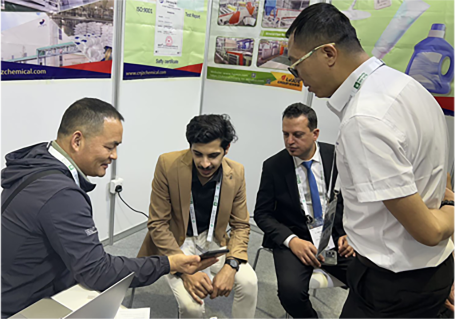
Дек . 18, 2024 20:11 Back to list
Exploring the Role of HPMC in Pharmaceutical Excipients for Enhanced Drug Formulation
The Role of HPMC in Pharmaceutical Excipients
Hydroxypropyl methylcellulose (HPMC) is a versatile polymer widely used in the pharmaceutical industry, particularly as an excipient in drug formulation. An excipient is any substance used in a drug formulation other than the active ingredient. HPMC has garnered significant attention due to its unique properties, which make it an essential component in various dosage forms, including tablets, capsules, and suspensions.
Chemical Properties and Composition
HPMC is a semi-synthetic derivative of cellulose, which is a natural polymer derived from plant sources. It is formed by the substitution of some of the hydroxyl groups in cellulose with hydroxypropyl and methyl groups. This chemical modification imparts solubility in cold water, unlike its parent compound, cellulose. The degree of substitution varies, leading to different grades of HPMC with distinct characteristics. As a result, HPMC can be tailored to meet specific formulation requirements, making it a highly flexible excipient.
Functional Applications
One of the primary applications of HPMC in pharmaceuticals is as a binder in tablet formulations. Binders are substances that promote adhesion between powder particles, ensuring that tablets maintain their integrity during manufacturing and handling. HPMC is particularly advantageous as a binder due to its adhesive properties and its ability to form a flexible gel upon hydration. This gel formation aids in the uniform distribution of the active ingredient within the tablet matrix.
In addition to its role as a binder, HPMC is also employed as a film-coating agent. Film coating is essential for protecting the active ingredients from environmental factors, improving the aesthetic appeal of tablets, and providing controlled release profiles. HPMC-based film coatings are often favored for their ability to provide a smooth finish that enhances swallowability.
Moreover, HPMC serves as a thickening agent in various formulations. Its viscosity properties can be adjusted by controlling the concentration used in the formulation. This characteristic is particularly beneficial in oral suspensions, where HPMC aids in maintaining the dispersion of solid particles and improving the product's stability.
hpmc excipient

Controlled Release Applications
Another significant application of HPMC is in the development of controlled-release systems. The ability of HPMC to form hydrophilic gels makes it suitable for creating matrices that can regulate the release of active ingredients over an extended period. When used in matrix tablets, the drug is encapsulated in an HPMC polymer that swells upon contact with water, allowing for a steady dissolution rate and, consequently, a controlled release of the drug into the body.
The ability to manipulate the release profile of drugs is critical in many therapeutic areas, including chronic pain management, diabetes, and hypertension, where maintaining stable drug levels in the bloodstream is essential for effective treatment.
Safety and Regulatory Considerations
HPMC is generally recognized as safe (GRAS) by the Food and Drug Administration (FDA) and is also compliant with regulatory standards in various international jurisdictions. Its non-toxic nature and biocompatibility make it an attractive option for pharmaceutical applications. Additionally, HPMC's stability under varying pH conditions and temperatures contributes to its effectiveness as an excipient.
Conclusion
In summary, Hydroxypropyl methylcellulose (HPMC) plays a vital role in pharmaceutical excipients due to its diverse functional properties, including binding, thickening, and film-coating abilities. Its versatility enables it to be utilized in a wide range of dosage forms and applications, particularly in the area of controlled release. As the pharmaceutical industry continues to evolve, HPMC will likely remain an integral component of drug formulation, contributing to the development of new and improved therapeutic options for patients worldwide. Its proven safety profile further enhances its appeal, ensuring that HPMC will remain a mainstay in pharmaceutical formulation for years to come.
-
Versatile Hpmc Uses in Different Industries
NewsJun.19,2025
-
Redispersible Powder's Role in Enhancing Durability of Construction Products
NewsJun.19,2025
-
Hydroxyethyl Cellulose Applications Driving Green Industrial Processes
NewsJun.19,2025
-
Exploring Different Redispersible Polymer Powder
NewsJun.19,2025
-
Choosing the Right Mortar Bonding Agent
NewsJun.19,2025
-
Applications and Significance of China Hpmc in Modern Industries
NewsJun.19,2025







